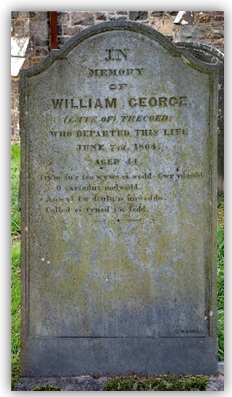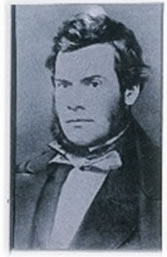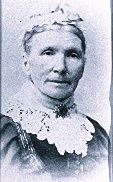The George Gravestones
Numerous members of David Lloyd George’s family lie buried at Jordanston, but only four will be highlighted on this site.
The William George Headstone ~ (Point 19)
The William George commemorated on this headstone was the father of the Prime Minister.
It is apparent that he was named after his dead older brother. This William had no interest in becoming a farmer, so he was sent to Haverfordwest to be articled to be a doctor.
Medicine was of no interest either, but literature most certainly was. He went to London for about ten years and became a tutor
For reasons of health he returned to his native county and opened a school at nearby Granston. He fell in love and married a Miss Huntley, but the first Mrs. George died a year or two later and was Buried in St. Thomas’ Churchyard, Haverfordwest.
William then took a scholastic appointment in North Wales, where he met and married a Miss Elizabeth Lloyd, of Caernarfon.
He then took up an appointment in Manchester, where David Lloyd George was born
Ill-health again forced a return to Pembrokeshire and this time he became a farmer at Bullford, Johnston. It was here he died, but he was brought back to his native parish to be buried.
Widowed Mrs. George and the children returned to Caernarfonshire to reside with her brother, Richard Lloyd, the cobbler at Llanystumdwy.
David Lloyd George’s Parliamentary career began in 1890, when he became M.P. for Caernarfon Boroughs, a seat he was to hold for over half a century.
The David George Headstone ~ (Point 20)
The plain headstone records the burial place of David George, the grandfather of the Prime Minister. He was the son of William and Mary George and, as can be read on the stone, he farmed at Trecoed in the parish, being a tenant of Gwynne Gill Vaughan ~ (Point 7).
He died at the young age of 46 in 1828. His wife also lies buried at Jordanston ~ (Point 21).
Also commemorated is the little son, William, who died in 1818 at the age of 5. He was the infant uncle of David Lloyd George.
From these gravestones, if you rejoin the main path to the church and on the right will be seen the graves of the Prime Minister’s grandmother and that of her second husband.
The Mary George Headstone ~ (Point 21)
Mary George was the wife of David George ~ (Point 20) and the mother of William George ~ (Point 19) and therefore the grandmother of the Prime Minister.
Mary was born in 1782, the daughter of William and Martha Charles of Brawdy. A governess by profession, she and David had five daughters and two other sons apart from William. When her husband died in 1828, she had the great responsibility of running the large farm at Trecoed and so it is no real wonder that within two years of her first husband’s death, that she had married again, this time to Benjamin Williams ~ (Point 21), who was some fifteen years her junior. The marriage took place at St. Cwrda’s, after banns, on 1st April 1830.
It will be noticed from the headstone that she was a very devout Baptist and there is a tradition that the Baptist chapel at Scleddau was paid for by her. She died on 25th September 1860, aged 78.
Immediately in front of the Mary George headstone lies her second husband.
The Benjamin Williams Headstone ~ (Point 22)
Benjamin Williams was the second husband of Mary George ~ (Point 21) and he married her in 1830. Born around 1798, he was the son of John Williams and was a native of the parish of Castlebythe. In 1838 he was recorded as one of the two overseers of the Parish of Jordanston and he had a vote.
Benjamin Williams continued at Trecoed after his wife’s death and he, like her, was a convinced Baptist, being a deacon at Llangloffan for forty years. He died on 7th October 1875, aged 78.
‘I am a Pembrokeshire lad.
I come from Pembrokeshire stock and am proud of it’
Stated by Lloyd George at an election address in Crymych to support the candidature of his son,
Major Gwilym Lloyd George, during the election campaign of 1924.
Quoted from 30 October, 1924




